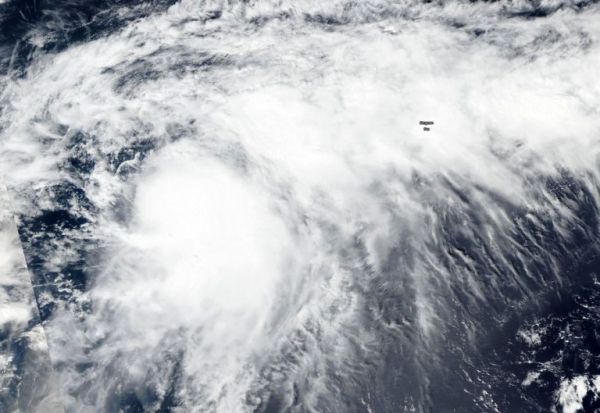Forecasters use a variety of satellite imagery to understand what’s happening in a storm, and sometimes just a visible picture can tell a lot. NASA-NOAA’s Suomi NPP satellite provided forecasters with a visible image of the storm that showed wind shear was pushing clouds away from the storm’s center.
The shape of a tropical cyclone provides forecasters with an idea of its organization and strength. When outside winds batter a storm it can change the shape of it and push much of the associated clouds and rain to one side of it. That’s what wind shear does.
In general, wind shear is a measure of how the speed and direction of winds change with altitude. Tropical cyclones are like rotating cylinders of winds. Each level needs to be stacked on top each other vertically in order for the storm to maintain strength or intensify. Wind shear occurs when winds at different levels of the atmosphere push against the rotating cylinder of winds, weakening the rotation by pushing it apart at different levels.
Read more at NASA / Goddard Space Flight Center
Image: NASA-NOAA’s Suomi NPP satellite passed over Tropical Storm Jerry and revealed wind shear was pushing the bulk of its clouds to the east-northeast of its center. Credit: NASA Worldview, Earth Observing System Data and Information System (EOSDIS)


